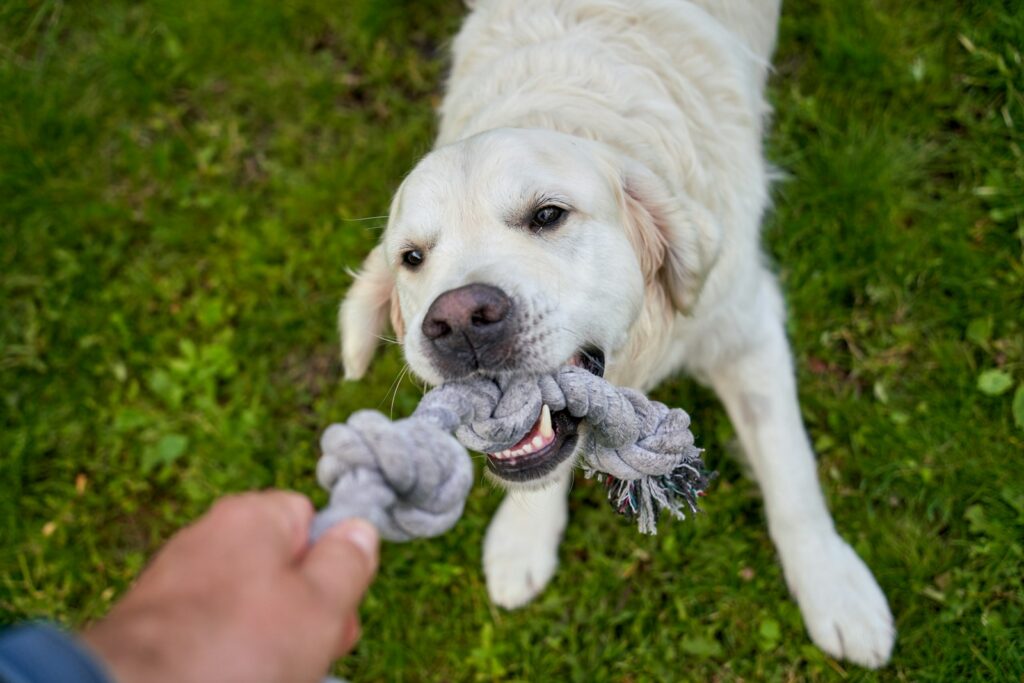For many dog owners, a stubborn or disobedient pet can be one of the most frustrating aspects of pet parenthood. You’ve tried treats, toys, and even a firm voice, yet your furry friend still seems to have selective hearing when it comes to commands. Before you throw in the towel, understand that canine disobedience rarely stems from stubbornness alone. Most “listening problems” actually reflect communication breakdowns, training inconsistencies, or unaddressed needs.
The good news? With the right understanding and approach, you can transform your seemingly defiant dog into an attentive companion. This article explores the common reasons behind canine disobedience and provides practical solutions to improve communication with your four-legged friend.
Mismatched Expectations Understanding Canine Development

Many owners expect too much, too soon from their dogs, especially puppies and adolescents. Just like human children, dogs go through developmental phases that affect their ability to concentrate and follow directions. Puppies under six months have extremely limited attention spans, while adolescent dogs (6-18 months) experience hormone surges that can make them temporarily “forget” previously learned behaviors.
Adult dogs who missed proper socialization during critical periods may also struggle with certain commands. Understanding these developmental realities helps set realistic expectations for your dog’s performance. Rather than assuming your dog is being willfully disobedient, recognize that they may simply be acting their age or showing the effects of their developmental history.
The Reward Mismatch When Reinforcement Falls Short

Dogs operate on a simple principle: behaviors that get rewarded get repeated. If your dog consistently ignores commands, your reinforcement strategy may be missing the mark. What you consider valuable (a dry biscuit or verbal “good dog”) might hold little appeal compared to the competing reward of chasing a squirrel or sniffing an interesting scent. Each dog has a unique “reward hierarchy” – some value food above all else, while others prefer toys, play, or social attention.
Additionally, rewards lose value in different contexts; a treat that works in your quiet living room might become worthless in a stimulating park environment. Take time to discover what truly motivates your individual dog and adjust rewards based on the distraction level of each environment for more reliable results.
Inconsistent Training Mixed Signals and Confusion

Dogs thrive on consistency, and inconsistent training creates confusion rather than cooperation. If family members use different commands for the same behavior (some saying “down” for lying down while others use “off” for jumping), your dog receives mixed signals. Similarly, if the same behavior sometimes earns rewards and other times brings punishment (like occasionally allowing jumping for greetings), your dog can’t discern the actual rule.
Even inconsistency in tone matters – using a cheerful voice for commands one day and a stern voice the next creates uncertainty. Create a “command dictionary” that all household members follow, establish clear rules about which behaviors are always acceptable versus never acceptable, and maintain consistent expectations across all interactions to eliminate confusion.
Environmental Distractions The Sensory Overload Factor

Dogs experience the world primarily through their exceptional senses of smell and hearing, making environmental distractions a major obstacle to obedience. Your living room command response may disappear at the dog park because your voice competes with countless fascinating stimuli. Each new environment introduces competing sounds, smells, and sights that can overwhelm your dog’s focus on your requests.
The solution requires progressive training through increasingly distracting environments, starting in quiet spaces and gradually working toward more stimulating locations. This systematic approach builds your dog’s “distraction muscle” over time. Remember that a dog who can’t listen in high-distraction environments isn’t being stubborn—they simply haven’t yet learned to filter out competing stimuli.
Physical Limitations Health and Comfort Concerns

Physical discomfort or health issues frequently manifest as apparent disobedience in dogs. A dog who suddenly stops sitting on command might be experiencing hip pain, while one who ignores recall may be suffering from hearing loss. Other physical factors like hunger, thirst, need to eliminate, or extreme temperatures can all override a dog’s ability to focus on training.
Even subtle issues like arthritis, dental pain, or digestive discomfort can significantly impact responsiveness. If your previously obedient dog shows sudden changes in listening behavior, schedule a veterinary examination to rule out medical causes. Always ensure your dog’s basic physical needs are met before training sessions, as discomfort will invariably trump obedience.
Emotional State Anxiety Fear and Arousal

A dog’s emotional state dramatically impacts their ability to process and respond to commands. When experiencing fear, anxiety, or over-excitement, dogs enter physiological states where the thinking brain takes a backseat to instinctual responses. During these heightened emotional states, even well-trained dogs may appear to “forget” their training as their bodies flood with stress hormones. Signs of emotional overload include panting, pacing, whining, stiffened body posture, or excessive vocalization.
If your dog consistently shows these signs in certain situations, focus first on addressing the emotional response through desensitization and counterconditioning rather than obedience. Creating emotional safety allows your dog’s thinking brain to reengage, making command responses possible again.
Training Gaps Foundation Skills and Generalization

Many apparent listening problems stem from incomplete training rather than deliberate disobedience. Dogs don’t automatically generalize behaviors across different contexts – a “sit” learned in the kitchen doesn’t automatically transfer to the front yard without specific training. Similarly, many owners inadvertently skip foundation skills necessary for more complex behaviors.
For instance, a reliable recall requires progressive distance training rather than expecting immediate responsiveness from far away. Examine whether your dog truly understands what you’re asking in each specific context. Return to basics and rebuild behaviors in each new location, gradually increasing difficulty as your dog demonstrates success at each step.
The Communication Barrier Unclear Signals

Dogs primarily communicate through body language, making our verbal-heavy communication style potentially confusing. Unintentional body signals often contradict our verbal commands, leaving dogs unsure which to follow. For example, saying “come” while leaning forward (a pressure signal in dog language) or asking for “down” while raising your hand upward sends mixed messages.
Additionally, long strings of words like “Buddy, come on, please come here right now” can obscure the actual command. Focus on using clean, consistent commands with matching body language. Pair single-word cues with appropriate gestures, maintain neutral body positioning when giving signals, and avoid “command nagging” by giving instructions just once rather than repeatedly.
Reinforcement History The Power of Past Experiences

Every interaction creates a reinforcement history that shapes future behavior. If your dog has historically been rewarded (even inadvertently) for ignoring commands, that pattern becomes reinforced. Consider the dog who has learned that the first three recalls can be ignored because nothing happens, but the fourth recall—accompanied by a frustrated tone—means business. Similarly, if coming when called occasionally results in unpleasant experiences like medication or bath time, your dog builds negative associations with that command.
Examine your dog’s reinforcement history with problematic commands and begin rebuilding positive associations. Make responding to commands consistently rewarding, and avoid using commands for transitions to unpleasant activities until reliability is firmly established.
Breed and Individual Traits Working With Natural Tendencies

Different dog breeds were developed for specific purposes, resulting in hardwired tendencies that affect trainability in various contexts. Scent hounds like Beagles may struggle with recall when following interesting smells because they were specifically bred to follow scents independently of human direction. Livestock guardians like Great Pyrenees were selected for independent decision-making rather than handler focus. Even within breeds, individual personality differences create unique training challenges.
Rather than fighting against your dog’s natural tendencies, work with them by channeling innate drives into appropriate outlets. For example, provide regular scenting activities for hounds or appropriate guardian opportunities for protective breeds, while adapting your training expectations to align with your dog’s inherent strengths and challenges.
Relationship Foundation Trust and Connection

Perhaps the most overlooked factor in canine listening problems is the fundamental relationship between dog and owner. Dogs who feel insecure in their relationship or lack trust in their handlers show reduced motivation to cooperate. Building a strong relationship requires more than just feeding and walking your dog; it demands genuine engagement, play, and positive interactions that aren’t training-focused.
Take time daily to simply connect with your dog through activities they enjoy without asking for specific behaviors. Practice being fully present during interactions rather than distracted by phones or other tasks. As your relationship strengthens, your dog’s natural desire to cooperate typically increases, making formal training more effective.
The Modern Solution Force Free Training Methods

Contemporary animal behavior science strongly supports positive reinforcement methods over punishment-based approaches for developing reliable responses. Force-based methods may appear to work quickly but often create fallout including fear, aggression, or shutdown behaviors that worsen listening problems long-term. Modern force-free training focuses on teaching dogs what TO do rather than punishing mistakes, building confidence rather than compliance through fear.
These methods employ marker training (using a clicker or verbal marker), high-value rewards, and breaking behaviors into achievable steps. Consider working with a certified force-free trainer who uses science-based methods if persistent issues continue despite your best efforts. Professional guidance can identify subtle factors you might miss and develop a customized approach for your specific challenges.
Practical Implementation Creating Your Listening Action Plan

Transforming a seemingly “deaf” dog into an attentive companion requires a thoughtful and consistent approach. Start by observing when and where your dog seems unresponsive, noting patterns such as time of day, location, or distractions. Ensure their basic needs are met—adequate exercise, mental stimulation, and no underlying medical issues—before expecting reliable focus. Rebuild training foundations in calm environments with high-value rewards, gradually increasing difficulty as your dog improves.
Consistency across all household members is crucial, and incorporating fun, bonding activities alongside training helps strengthen your connection. By recognizing that most listening problems arise from unmet needs or unclear communication, not stubbornness, you’ll be better equipped to guide your dog toward attentive, responsive behavior—deepening your relationship in the process.

